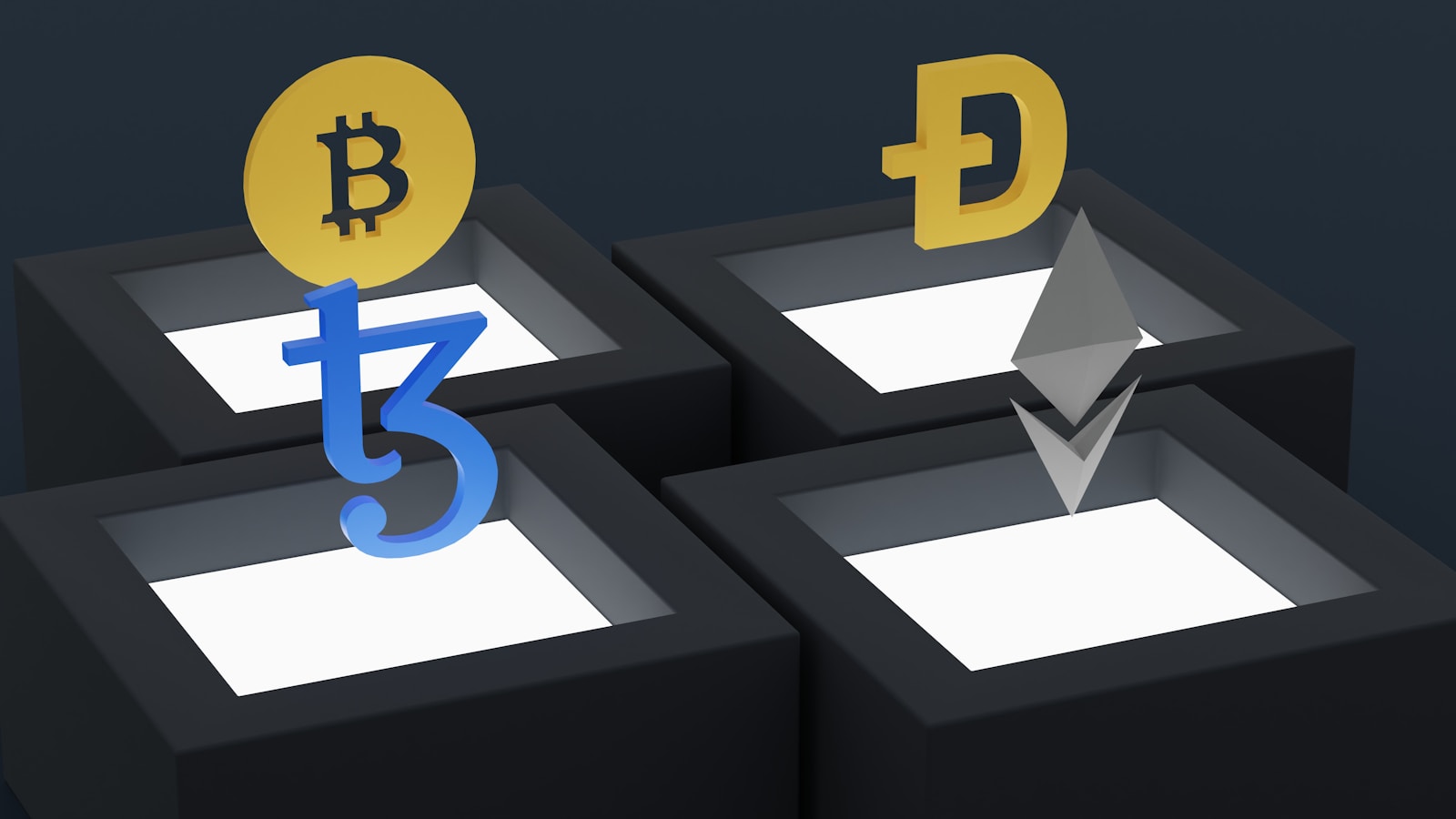Mempools act as temporary repositories where unconfirmed transactions queue before being added to the blockchain. Each node in the network maintains its own mempool, organizing incoming data based on various criteria such as fee rates and timestamp. This queuing system ensures that transactions are lined up systematically, ready for validation and inclusion.
The prioritization within these pools depends heavily on the fees attached to each entry; higher-fee submissions receive precedence, accelerating their confirmation time. Transactions with lower fees remain in the queue longer, waiting until resources free up or miners select them based on specific policies. Understanding how this prioritization impacts wait times can help users optimize their submission strategies.
The mempool size fluctuates depending on network traffic and congestion levels. When demand surges, pools become saturated, causing delays and increasing competition among transactions vying for limited block space. Monitoring mempool conditions provides valuable insight into current network health and expected processing speeds, enabling better decision-making regarding timing and fee selection.
Transaction pools: waiting area for processing
The mempool acts as a temporary holding zone where unconfirmed transactions queue before inclusion in a new block. Each node maintains its own mempool, which serves as a buffer to organize and prioritize incoming requests according to network rules. This queuing mechanism is crucial because it allows miners or validators to select which operations to incorporate next based on factors like fees and size, ensuring efficient use of block space.
Within this storage space, transactions compete for priority status. Miners typically prefer those with higher fees since they represent greater compensation for the computational effort required during validation. As a result, mempools dynamically adjust as new data arrives and confirmed items are removed, continuously reshaping the order in which transactions await confirmation.
Understanding how transaction management works inside mempools
Mempools differ slightly between blockchain protocols but generally function by maintaining an organized queue of pending operations ready for verification. For instance, Bitcoin nodes use fee-per-byte metrics to rank entries; those offering more satoshis per byte receive accelerated treatment. Ethereum’s system involves gas price bidding, where users specify maximum willingness to pay per unit of computation, influencing the position within the pool.
This prioritization mechanism helps mitigate congestion during periods of high demand. When network activity spikes–such as during popular token launches or major events–the queue lengthens significantly, causing delays and increased costs for lower-priority submissions. Developers can optimize transaction inclusion strategies by analyzing mempool status data with tools like block explorers or specialized API services that provide real-time insights into pending queues.
Technically speaking, each transaction enters the mempool after passing initial validation checks verifying signatures and resource limits (e.g., gas or size constraints). Once accepted, it remains visible until confirmed by a successful mining operation or dropped due to expiration policies set by individual nodes. These policies vary but commonly involve time-based removal if transactions linger too long without confirmation, preventing indefinite clogging of the buffer space.
Practical examples highlight how understanding mempool dynamics benefits both users and developers. During congested phases on networks like Bitcoin Cash or Ethereum Classic, observing fee market trends via mempool statistics enables informed decisions about fee amounts necessary to achieve timely confirmations. Additionally, some wallets implement dynamic fee adjustments triggered by current pool conditions, improving user experience by balancing cost against processing speed automatically.
How Transactions Enter Pools
Newly created transactions enter the mempool immediately after they are broadcasted by users or applications through nodes connected to the blockchain network. Each node independently verifies incoming data against consensus rules, including signature validation and double-spend checks, before adding these records to its local mempool. This initial step ensures that only valid entries become candidates for inclusion in subsequent blocks.
The mempool functions as a dynamic queue where transactions await confirmation by miners or validators. Since block space is limited, not every submission gets included right away; instead, nodes prioritize entries based on specific criteria such as fee rates and transaction age. This prioritization directly influences how quickly a given record moves from the queue into an accepted block on the chain.
Verification and Prioritization Mechanics
Upon reception, each entry undergoes rigorous validation processes performed by node software. These checks confirm compliance with protocol specifications including input authenticity and fee sufficiency. The network favors transactions offering higher fees per byte of data because miners maximize rewards by selecting these first when assembling blocks.
A transaction’s position within the pool’s queue depends largely on its priority level, calculated using parameters like fee rate and time since submission. Nodes continuously reorder their mempools to reflect updated market conditions; for example, during periods of high congestion, average fee thresholds rise, pushing lower-fee transactions further back in line or even out of the pool altogether.
- Fee-based priority: Higher fees increase chances of earlier inclusion.
- Transaction size consideration: Smaller data footprints are more attractive due to limited block capacity.
- Age factor: Older transactions may gain slight preference if fees are comparable.
Data propagation across the network also impacts how quickly new submissions reach various nodes’ mempools. Because nodes connect through peer-to-peer links, some may receive updates milliseconds before others. This variance means that at any moment, pools held by different validators can slightly differ in contents and order.
This system allows users to influence processing speed by adjusting attached incentives. For instance, during Bitcoin’s peak usage in late 2017, many wallets automatically suggested higher fees to improve likelihood of timely acceptance into blocks. Conversely, under low demand scenarios, smaller fees often suffice without extensive delays.
The intricate mechanisms governing how entries join and move through these queues demonstrate a balance between fairness and economic incentives embedded within blockchain protocols. Understanding this flow empowers participants to make informed choices about submitting data with optimal cost-efficiency aligned to current network status.
Prioritizing transactions for mining
Miners prioritize entries in the mempool based primarily on the fee rate attached to each one, expressed as satoshis per byte or gas price in Ethereum. This approach ensures that those willing to pay higher fees receive faster confirmation times, as miners select more lucrative items from the queue first. In cases of network congestion, low-fee entries may remain pending longer, creating a backlog that requires users to increase their offers if quicker inclusion is desired.
Beyond fee rates, some nodes implement additional priority mechanisms such as transaction age and size. For example, older operations might receive slight preference to avoid indefinite postponement, while very large operations could be deprioritized due to limited block space and the desire to maximize profit per byte. These strategies shape how waiting entries move through the system and impact overall throughput.
Mechanisms influencing inclusion order
The mempool functions similarly to a dynamic queue where new submissions join at various positions depending on their attributes. Mining software often sorts these by descending fee rates but can incorporate custom rules reflecting network conditions or policy preferences. For instance:
- Bitcoin Core’s default behavior prioritizes fee-per-byte but respects ancestor fees when multiple linked operations are present.
- Ethereum miners emphasize gas price combined with gas limit considerations, affecting which calls are processed first.
- Some alternative chains allow explicit priority flags or rely on reputation systems within pools to optimize selection.
This layered prioritization allows networks to balance profitability with fairness and efficiency during peak demand periods.
Understanding these components can help users optimize their offers and anticipate wait durations more effectively, turning what seems like a complex backlog into a manageable sequence guided by clear economic incentives and technical constraints.
Handling Pool Congestion Issues
To alleviate congestion within mempools, prioritizing data packets based on fees paid remains the most straightforward strategy. Miners typically select entries that offer higher incentives, which naturally filters the inflow and accelerates clearing of valuable items. However, during peak periods when the network experiences a surge in submissions, even high-fee entries may face delays due to limited block capacity.
One effective approach involves dynamically adjusting fee structures through algorithms that estimate required costs for timely inclusion. Tools like fee estimation models analyze recent network conditions and suggest optimal fees to users before submission. This reduces uncertainty and prevents overloading queues with low-value entries unlikely to be processed promptly.
Technical Strategies for Managing Backlogs
Segregating entries into multiple priority categories within mempools can help streamline workflow. For instance, some implementations divide the queue into segments: high-priority based on fees or age, medium-priority for moderate fees, and low-priority containing less urgent data. Such classification enables miners or validators to allocate resources efficiently while preventing starvation of lower-tier submissions.
A practical example comes from Ethereum’s transaction pool management where pending requests are organized by gas price tiers. During times of congestion caused by popular decentralized applications (dApps), this tiered queuing ensures that time-sensitive operations gain precedence without completely sidelining cheaper requests. Additionally, mechanisms like “gas price bumping” allow users to increase offers post-submission if delays become excessive.
Network upgrades have introduced features such as improved mempool synchronization among nodes to reduce discrepancies causing redundant processing or stale queue states. By maintaining better alignment on pool contents across validators, unnecessary revalidations decrease, enhancing overall throughput. Protocol-level enhancements also include batch verification techniques which process grouped entries simultaneously rather than individually.
User behavior also plays a significant role in managing congestion effectively. Educating individuals about submitting offers with competitive fees aligned with current network demand fosters healthier pool dynamics. Moreover, encouraging the use of second-layer solutions or batching transactions lowers pressure on main chains’ queues by reducing individual entry counts.
In conclusion, addressing bottlenecks requires combined efforts spanning algorithmic improvements, protocol refinements, and informed user participation. A balanced ecosystem where priorities reflect both economic incentives and technical constraints promises smoother throughput and better experience for all participants navigating blockchain transaction handling systems.
Impact on Blockchain Confirmation Time
Optimizing the mempool and managing the queue effectively are pivotal in reducing confirmation latency within blockchain networks. Miners prioritize entries based on fee rates and size, which directly influences how quickly a transaction is included in a block. When the backlog of unconfirmed operations grows, those with lower fees face extended delays, highlighting the importance of dynamic fee estimation algorithms to maintain throughput efficiency.
The accumulation of pending requests in this intermediary storage space reflects network congestion and affects user experience profoundly. For example, during peak demand periods like DeFi activity surges or NFT drops, mempool saturation can multiply wait times exponentially. Implementing adaptive prioritization mechanisms and layer-2 scaling solutions can alleviate these bottlenecks by redistributing load and enabling faster clearance of queued data.
Key Technical Insights and Future Directions
- Fee Market Dynamics: Advanced bidding strategies for inclusion priority incentivize optimal resource allocation but require sophisticated wallet-level prediction tools.
- Mempool Synchronization: Improving propagation speed among nodes reduces discrepancies in local queues, enabling more consistent block assembly decisions across miners.
- Queue Management Algorithms: Incorporating time-based decay or replacement policies ensures stale or low-priority operations do not indefinitely occupy limited buffer capacity.
- Scalability Integration: Off-chain channels and sharding techniques promise to offload mainnet pressure by pre-processing or segmenting workload before reaching the primary validation queue.
As blockchain ecosystems evolve, balancing throughput with decentralization will depend heavily on refining how these waiting repositories handle influxes. Developers should focus on enhancing transparency around queue states while empowering users to adjust transaction parameters intelligently. This dual approach fosters an environment where confirmation delays become predictable rather than arbitrary, increasing trust and usability across applications.
Ultimately, understanding the interplay between network conditions and internal buffering strategies offers a roadmap to smoother interactions on distributed ledgers. By integrating real-time analytics with adaptive protocols, future iterations can minimize friction at this crucial staging point–turning what was once an unpredictable bottleneck into a managed gateway for efficient consensus participation.





